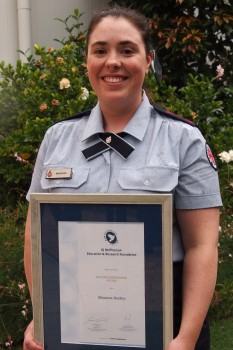
Queensland Ambulance Service (QAS) research has identified nine regions in the state where residents are less likely to survive a cardiac arrest compared with residents in other parts of the state.
According to QAS Research Fellow Dr Tan Doan, these areas have both the highest rates of out-of-hospital cardiac arrest (OHCA) and the lowest rates of bystander cardiopulmonary resuscitation (CPR).
Tan was the lead author of the Australasian Resuscitation Outcomes Consortium (Aus-ROC) report, “Identifying areas of Australia with high out-of-hospital cardiac arrest incidence and low bystander cardiopulmonary resuscitation rates: A retrospective, observational study” published in PloS ONE in late April, which identified 60 high risk areas in Australia. (The state with the largest proportion of high-risk areas was New South Wales.)
The study included a nationwide total of 62,579 OHCA cases attended by ambulance services across 543 LGAs.
Tan said early bystander CPR is critical to cardiac arrest survival and it is one of the first steps of the Chain of Survival – a series of interlinked actions employed to maximise the likelihood of survival from cardiac arrest.
Tan’s research used complex mathematical modelling and spatial mapping, adjusting for areas of low population density, to estimate OHCA incidence and bystander CPR rates in each Local Government Area (LGA).
These areas had an OHCA incidence rate greater than the state’s 75th percentile and a bystander CPR rate less than the state’s 25th percentile.
Queensland’s highest-risk regions include Bundaberg, Charters Towers, Doomadgee, Fraser Coast, Hinchinbrook, Mareeba, Northern Peninsular Area, South Burnett and Southern Downs.
This report has prompted more calls nationally for targeted education campaigns to improve community awareness of cardiac arrest and CPR.
Tan said given the identified Queensland high-risk LGAs were in the state’s remote and regional areas, it would be fair to assume these LGAs’ communities would have different demographics and social economics to those in the metropolitan regions.
“There is evidence regional and remote areas often have a higher proportion of people who are 65 years or older, and they also tend to have higher rates of health-risk behaviours such as smoking and alcohol consumption compared to metro areas,” Tan said.
Tan has been conducting pre-hospital care research for around six years after completing a Masters in Health Economics and his PhD, and his research has informed clinical guidelines, triggered reviews and strategic interventions within the QAS.
He said now Queensland’s high-risk areas had been identified, there was an opportunity for QAS staff and volunteers to work towards boosting those communities’ CPR education and awareness.
Whitsunday Station Advanced Care Paramedic (ACPII) Rhiannon Buckley has been doing just this in Townsville District’s Burdekin region.
Her QAS research journey began in 2021, when Rhiannon received a $5,000 KJM research grant to identify barriers in her community to greater CPR awareness and use, and propose effective tactics to counter these barriers to motivate and mobilise those communities to learn CPR. 
She also completed a Graduate Diploma in Health Promotion in 2021.
Her work aligns with and supports Tan’s research from a community-facing perspective.
“My aim was to initially find the areas with higher rates of cardiac arrest and lower use of bystander CPR.
“I wanted to look at the barriers we’re facing which are preventing people from wanting to participate, and what the facilitators are to increasing participation rates.”
Rhiannon said her research comprised four parts, with the first working closely with Tan to identify the higher risk locations.
“The second part of my research was based on community analysis, looking at the social determinants of one of the identified areas, and seeing what might be affecting community members’ participation rates including their age range, social economic status, and cultural backgrounds,” she said.
“The third part involved research to see whether any previous education interventions had been effective in changing attitudes to participation and learning CPR.
“And finally, I’ll be analysing the surveys and creating an area-specific health promotion plan.”
Rhiannon said the Burdekin district has one of the highest Aboriginal and Torres Strait Islander populations in the country, and has a high proportion of people aged over 45 years.
“Preventative health care is something I’m quite passionate about and it’s one of my main areas of interest,” she said.
“Even if we can teach one person how to identify a cardiac arrest, or ideally the symptoms of a heart attack before it results in an arrest, and to care for someone until an ambulance arrives, I see that as a win.
“Every single CPR awareness session we do in our community receives positive feedback.
“After the sessions, participants tell us they will remember what we’ve taught them and will help their friends and family in an emergency.
“Generally they’re super thankful to learn these skills and their feedback means they’re feeling a lot more confident after these lessons to at least give it a go.”
Tan said targeting high-risk regions according to their local characteristics, barriers and facilitators identified in projects like Rhiannon’s has the potential to improve the effectiveness and reduce costs of community-based interventions.